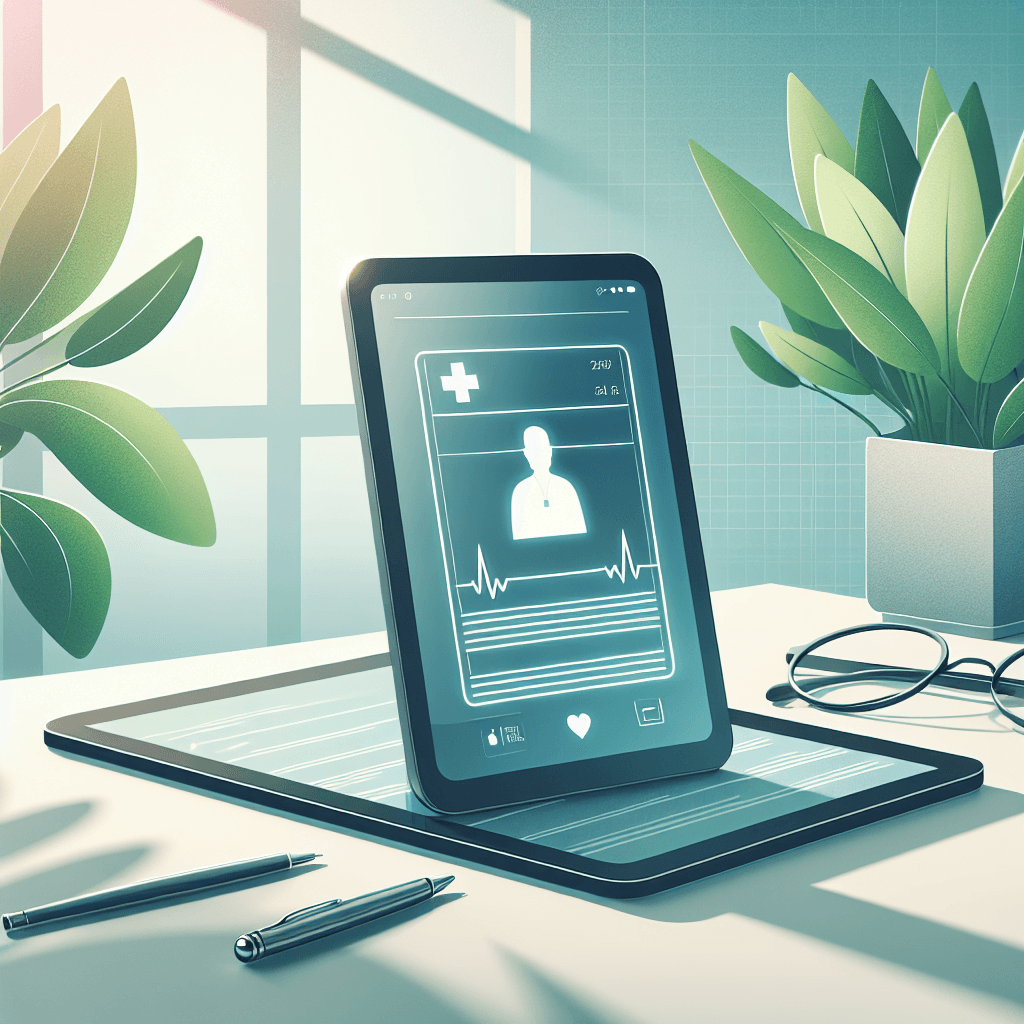Telehealth, an increasingly prevalent healthcare solution in today’s digital era, offers patients the convenience of accessing medical care remotely. This article aims to provide you with comprehensive knowledge about telehealth, including its effectiveness as a healthcare alternative. By delving into the benefits and limitations of telehealth, you will gain a deeper understanding of how this innovative approach can impact your healthcare experience and contribute to enhancing overall outcomes. From the comfort of your own home or office, telehealth has the potential to revolutionize the way you receive medical care.

Table of Contents
What is Telehealth?
Definition of Telehealth
Telehealth refers to the use of telecommunications technology to deliver healthcare services remotely. It enables healthcare professionals to provide consultation, diagnosis, treatment, and monitoring to patients using audio, video, and other electronic means. Telehealth allows for convenient access to healthcare services, particularly for patients in remote or underserved areas.
Types of Telehealth Services
There are various types of telehealth services that cater to different healthcare needs. These services include:
- Telemedicine: This involves the remote diagnosis and treatment of patients through video conferencing or phone calls. It allows patients to consult with healthcare professionals without the need for in-person visits.
- Mobile Health Apps: These smartphone applications enable users to track their health, monitor vital signs, and access virtual consultations with healthcare providers. They offer convenience and personalized health management.
- Remote Patient Monitoring: Through the use of connected devices, healthcare providers can remotely monitor patients’ vital signs and health conditions. This allows for early detection of any issues and timely intervention.
- Store-and-Forward Technology: This involves the secure sharing of patient medical information, such as images or test results, between healthcare providers for diagnostic purposes. It enables collaboration and a more efficient exchange of information.
The Rise of Telehealth
Benefits of Telehealth
Telehealth brings numerous benefits to both patients and healthcare providers. Some key advantages include:
Increased Accessibility
Telehealth breaks down geographic barriers and expands access to quality healthcare. Patients in rural or underserved areas can now connect with specialists and receive expert care without the need for extensive travel. It also helps individuals with mobility limitations, ensuring they can receive medical attention conveniently.
Reduced Costs
Telehealth provides cost savings for both patients and healthcare systems. By eliminating the need for transportation and reducing hospital visits, patients can save on travel expenses. Additionally, telehealth can lower healthcare facility costs by reducing the number of in-person consultations and hospitalizations.
Enhanced Convenience
With telehealth, patients can receive care from the comfort of their own homes, eliminating the need for waiting rooms or lengthy travel times. It allows for flexible scheduling and reduces the time and effort involved in seeking healthcare services. Telehealth also offers the convenience of accessing care outside of standard business hours.
Telehealth Technologies
Video Conferencing
Video conferencing technology forms the backbone of telehealth services. It enables real-time communication between patients and healthcare providers, allowing for interactive consultations and assessments. This technology facilitates visual examination, visual interpretation of diagnostic tests, and the ability to observe physical symptoms remotely.
Mobile Health Apps
Mobile health apps have revolutionized how individuals manage their health. These applications offer functionalities like symptom tracking, medication reminders, and access to virtual consultations. Users can monitor their health parameters, receive personalized recommendations, and easily communicate with healthcare professionals.
Remote Patient Monitoring
Remote patient monitoring devices, such as wearable sensors or medical devices with embedded sensors, allow continuous or periodic tracking of vital signs and health parameters. Healthcare providers can remotely monitor patients’ conditions and proactively intervene if any issues arise. This technology is particularly useful in managing chronic conditions and promoting preventive care.
Store-and-Forward Technology
Store-and-forward technology enables the secure transmission of patient medical information, such as test results, images, or medical histories, for diagnostic purposes. This allows healthcare providers to collaborate, seek specialist opinions, and improve the efficiency of patient care. It eliminates the need for physical transport of documents and speeds up the diagnostic process.
How Telehealth Works
Appointment Scheduling
Telehealth services typically involve scheduling virtual appointments through online platforms or healthcare provider portals. Patients can choose a convenient time slot and provide their medical history or specific concerns in advance. This facilitates efficient and focused consultations.
Virtual Consultations
Virtual consultations take place via video conferencing or phone calls. During these consultations, healthcare providers can discuss patients’ symptoms, review medical records, conduct visual examinations, and provide diagnoses and treatment recommendations. Patients can ask questions and receive professional advice, ensuring comprehensive care.
Electronic Health Records (EHR)
Electronic health records (EHRs) play a crucial role in telehealth. They allow healthcare providers to have access to patients’ medical histories, test results, and other relevant information during virtual consultations. EHRs ensure continuity of care, facilitate accurate diagnoses, and enable seamless information exchange across healthcare settings.
Prescription and Medication Management
Telehealth platforms often include features for prescription and medication management. Healthcare providers can issue electronic prescriptions directly to pharmacies, ensuring timely access to medications. Patients can also receive alerts and reminders regarding medication schedules, promoting adherence and improving health outcomes.
Telehealth and Healthcare Providers
Integration into Traditional Healthcare
Telehealth is increasingly integrated into traditional healthcare systems, complementing in-person care. Healthcare providers can offer telehealth services as part of their practice, expanding their reach and meeting the evolving demands of patients. The integration fosters a hybrid model of healthcare delivery that combines the benefits of telehealth with the personalized touch of in-person visits.
Primary Care and Specialty Services via Telehealth
Telehealth enables the provision of both primary care and specialized services remotely. Patients can connect with primary care providers for routine check-ups, preventive care, and minor ailments. Additionally, telehealth allows individuals to access specialty services like mental health counseling, dermatology consultations, or chronic disease management from the convenience of their homes.
Collaboration and Coordinated Care
Telehealth promotes collaboration among healthcare providers, enabling seamless coordination of care. Through telehealth platforms, primary care providers, specialists, and other healthcare professionals can share information, discuss diagnoses, and develop comprehensive treatment plans. This collaborative approach ensures holistic and integrated care for patients.
Patient Experience with Telehealth
Assessing Patient Satisfaction
Patient satisfaction is a critical aspect of telehealth. Studies show high levels of satisfaction among patients who have utilized telehealth services. They appreciate the convenience, reduced wait times, and improved access to specialized care. Assessing patient satisfaction helps healthcare providers identify areas for improvement and deliver a patient-centered telehealth experience.
Telehealth vs. In-Person Visits
Telehealth and in-person visits each have their merits. While in-person visits provide physical examinations and a more personal connection, telehealth offers convenience, reduced costs, and access to healthcare professionals without leaving home. The choice between telehealth and in-person visits depends on the nature of the condition, patient preference, and the availability of resources.
Accessibility Challenges for Patients
Despite the advantages of telehealth, certain groups of patients face accessibility challenges. Those without reliable internet connections or access to the necessary technology may find it difficult to engage in telehealth services. Addressing these challenges requires efforts to bridge the digital divide, provide technological resources, and ensure equitable access to telehealth for all.

Effectiveness of Telehealth
Healthcare Outcomes
Telehealth has demonstrated positive healthcare outcomes across various medical disciplines. Studies have shown its effectiveness in improving patient outcomes, reducing hospital readmissions, and enhancing the management of chronic conditions. Telehealth enables early intervention, promotes preventive care, and enhances patient engagement, leading to better health outcomes.
Management of Chronic Conditions
Chronic conditions require ongoing management and monitoring. Telehealth tools, such as remote patient monitoring and virtual consultations, play a crucial role in effectively managing these conditions. Patients can easily track their health parameters, receive timely interventions, and have regular communication with healthcare providers, leading to improved quality of life.
Remote Monitoring and Intervention
Telehealth facilitates remote monitoring of patients’ health conditions, allowing healthcare providers to intervene promptly when necessary. This is particularly beneficial for individuals with complex health needs or those who live in remote areas. Telehealth enables continuous monitoring of vital signs, medication adherence, and overall health status, leading to early detection of issues and timely intervention.
Mental Health Support
Telehealth has proven to be a valuable tool for mental health support, especially during challenging times such as the COVID-19 pandemic. Virtual counseling sessions, support groups, and therapy sessions have increased access to mental health services. Telehealth allows individuals to seek timely help, overcome geographical barriers, and receive confidential care from the comfort of their own space.
Regulatory Considerations
Telehealth Regulations and Laws
Telehealth is subject to specific regulations and laws that vary by jurisdiction. These regulations govern issues such as licensure, privacy and security, prescribing medication remotely, and reimbursement policies. It is essential for healthcare providers and organizations to stay updated with regional telehealth regulations and ensure compliance to provide safe and legal care.
Reimbursement Policies
Reimbursement policies for telehealth services determine the financial aspect of providing and receiving care remotely. These policies dictate the type of services covered, reimbursement rates, and documentation requirements. Telehealth reimbursement policies have evolved over time, with many insurance providers and government programs expanding coverage to encourage the use of telehealth as a cost-effective and accessible healthcare option.
Privacy and Security Concerns
Privacy and security are crucial considerations in telehealth. Electronic transmission of sensitive patient information requires robust security measures to protect patient privacy and comply with healthcare regulations. Healthcare providers must adopt secure telehealth platforms, implement encryption protocols, and ensure the secure storage and transmission of patient data to maintain confidentiality and avoid data breaches.

Telehealth Challenges
Technological Barriers and Connectivity
Telehealth heavily relies on technology and connectivity, posing challenges for patients who lack access to reliable internet connections or technological devices. Disparities in internet infrastructure and limited digital literacy can hinder the adoption of telehealth among certain populations. Efforts to improve connectivity and provide technical support can help address these barriers.
Digital Divide and Limited Access
The digital divide refers to the inequitable access to technology and internet services. This divide can prevent vulnerable populations, including low-income individuals or elderly patients, from accessing telehealth services. Bridging the digital divide requires targeted initiatives, such as providing subsidized devices, improving internet infrastructure in underserved areas, and offering digital literacy programs.
Patient Engagement and Education
Successful implementation of telehealth depends on patient engagement and education. Patients need to understand how to effectively use telehealth platforms, monitor their health parameters, and manage their medical conditions remotely. Healthcare providers should focus on patient education, addressing concerns, and facilitating meaningful patient-provider interactions to ensure optimal engagement and outcomes.
Licensing and Credentialing
Telehealth often involves providing care across state or national boundaries, which can raise licensing and credentialing challenges. Healthcare providers must ensure they have the necessary licenses and credentials to practice telehealth in the regions where their patients reside. Regulatory bodies are working towards establishing more streamlined licensing processes to facilitate the delivery of telehealth services across borders.
Telehealth and the Future of Healthcare
Telehealth as a Standard Practice
Telehealth is increasingly being recognized as a standard practice in healthcare. The COVID-19 pandemic has accelerated its adoption and highlighted its importance in delivering care during global crises. As telehealth continues to evolve and improve, it is expected to become an integral part of healthcare delivery, complementing in-person services and providing greater accessibility and convenience to patients.
Advancements and Integration of Artificial Intelligence
Artificial intelligence (AI) holds significant potential in enhancing telehealth capabilities. AI-powered algorithms can assist in diagnosing conditions, analyzing patient data, and recommending treatment options. Integration of AI technology into telehealth platforms enables more accurate diagnoses, personalized care, and proactive health management, leading to improved patient outcomes.
Telehealth Beyond Pandemic
While the COVID-19 pandemic has catapulted telehealth into the mainstream, its significance will extend beyond the immediate crisis. Telehealth offers long-term benefits for healthcare systems, including reducing healthcare costs, improving access to care, and enhancing patient engagement. As telehealth becomes ingrained in healthcare delivery, it will continue to evolve and transform the way healthcare is delivered worldwide.
In conclusion, telehealth is revolutionizing healthcare by leveraging technology to provide remote access to quality care. It offers increased accessibility, reduced costs, and enhanced convenience for patients. Through telehealth technologies such as video conferencing, mobile health apps, and remote monitoring, patients can schedule appointments, connect with healthcare providers, access electronic health records, and receive prescription and medication management. Telehealth integrates into traditional healthcare, enhances collaboration among healthcare providers, and improves the patient experience. It has demonstrated effectiveness in improving healthcare outcomes, managing chronic conditions, facilitating remote monitoring and intervention, and providing mental health support. However, regulatory considerations, telehealth challenges, and the integration of artificial intelligence present ongoing areas for focus and improvement. Ultimately, telehealth is shaping the future of healthcare, becoming a standard practice, embracing advancements in AI, and continuing to revolutionize healthcare beyond the current pandemic.


